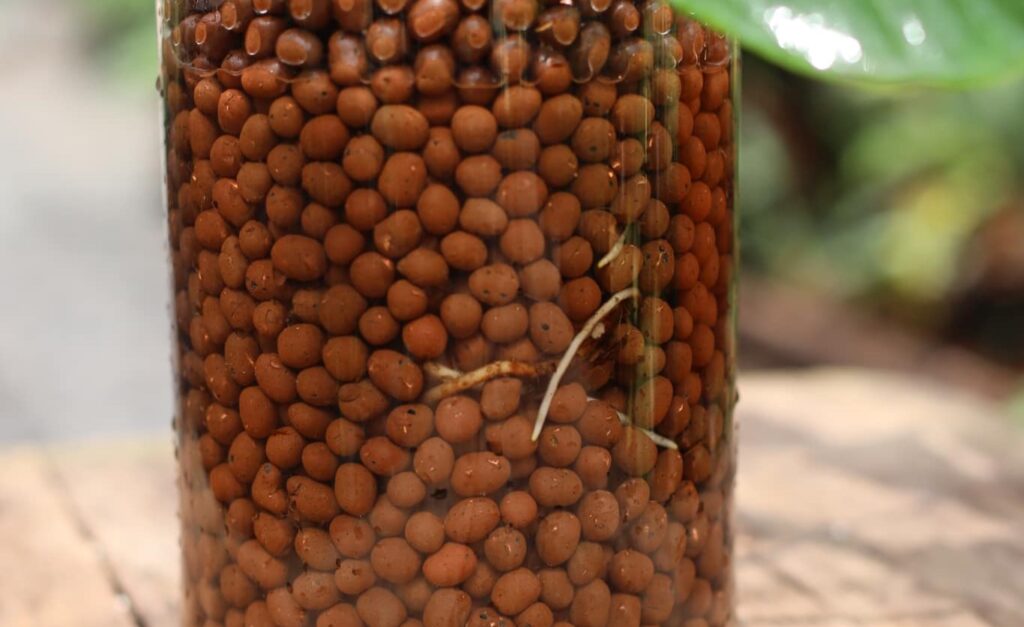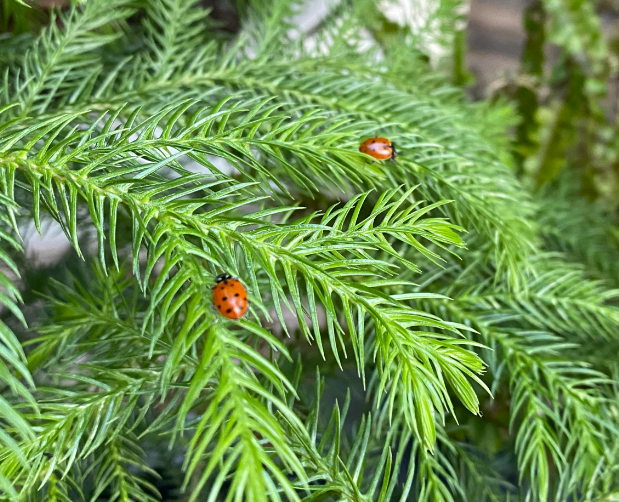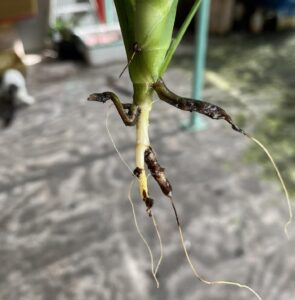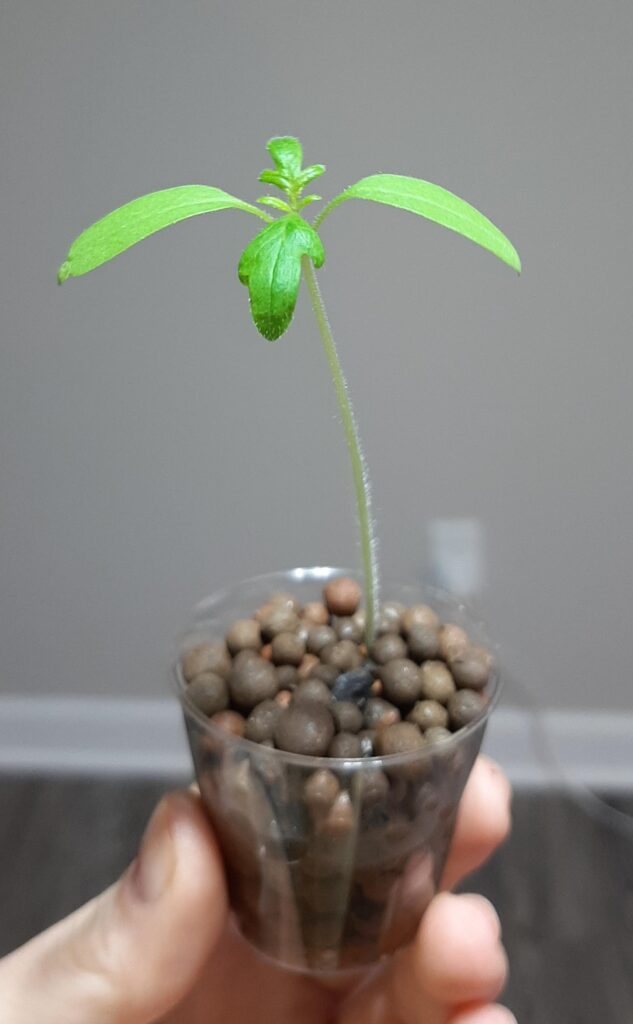Are you curious about growing plants in semi-hydroponics but held back by myths and misunderstandings? You’re not alone.
From the idea that “water roots” are a thing, to the belief that pests won’t bother your LECA-grown plants, to the notion that semi-hydroponics is just a short-term fad—there’s a lot of misinformation out there.
In this article, we’re debunking these myths and setting the record straight.

Semi-Hydroponics is Too Complicated for Beginners
Many people think that semi-hydroponics is only for experienced growers and that beginners should steer clear. This myth often arises from the perception that managing nutrients, pH levels, and other variables is too complex for someone just starting out.
In reality, semi-hydroponics can be quite beginner-friendly.
Yes, there’s a learning curve, but there’s a wealth of information and community support available to help newcomers get started.
Plus, semi-hydroponics can actually simplify some aspects of plant care, such as watering schedules and pest management, making it a good option for those new to the plant world.
No Pests in Semi-Hydroponics
Sorry to burst your bubble, but pests can still show up even if you’re growing in LECA. True, some bugs find it harder to thrive without soil, but they can still be a problem.
In this section, we’ll talk about the kinds of pests you might encounter, how to deal with them, and some unique tips for LECA growers.
One big reason people switch to LECA is to get rid of annoying fungus gnats.
While it’s true that these bugs don’t do well in LECA, they can still survive by feeding on rotting roots.
Other pests like thrips can also be a problem. And don’t forget about leaf-loving bugs like mites and mealie bugs; they don’t care what medium you’re using.
How to treat pests in Semi-Hydroponics
Most treatments that work for soil plants will also work for LECA plants. You can use sprays like you usually would. But avoid soil-based treatments and go for hydroponic-specific products instead.
My go-to is General Hydroponics Azamax. It works both as a spray and a systemic treatment. Just make sure to read the instructions to get the dosage right.

Other good options are Captain Jack’s and Safer brand Pyrethrin + Insecticidal Soap. These can tackle a range of bugs.
Some folks use predatory bugs to fight pests. I’m not a big fan because it’s hard to be sure they’ve gotten all the bad bugs, and it can get pricey. Plus, ladybugs, for example, tend to drown in the LECA reservoir.
LECA-specific tips:
The Dunk Method – This involves dunking your plant in a bucket filled with a bug-killing solution for about 10-30 seconds. This method is super effective but uses a lot of product. So, buy concentrated forms and use this for big infestations. My favorite for this is Safer Brand Pyrethrin + Insecticidal Soap, paired with Azamax to control future bug generations.
Systemic in the Reservoir – Azamax doesn’t have instructions for semi-hydroponic setups, so you’ll have to experiment. From my experience, it’s okay to leave Azamax in the reservoir for 1-2 weeks. Just keep an eye on your plants, especially if they’re submerged, as the roots can rot.
Don’t mix Azamax with your nutrient solution; your plants can go without nutrients for a few weeks.
Also, don’t use Azamax all the time to avoid creating superbugs.
After treatment, use a nutrient solution with probiotics like Quantum Orchid or Hydroguard, and a root booster like RapidStart or KelpMax.
In my opinion, the best way to tackle pests is a combo of sprays and systemic treatments.
Keep a regular spray schedule along with your Azamax treatment to cover the entire lifecycle of the pest. I personally don’t use Azamax for more than 3 weeks in the reservoir.
Your Plants Need to Have Water Roots First
First off, what even are “water roots”? Most people think they’re the fluffy white roots you often see in semi-hydroponic setups.
But calling them “water roots” is a bit misleading and can make us too comfy when switching our plants to a new environment.
Ever moved a plant from water to LECA and then watched it rot? Confusing, right? Keep reading.

Instead of getting stuck in the soil-versus-water mindset, let’s see roots as adaptable to different settings—like LECA, Pon, water, or even moss.
When you plant in any medium, you’re nudging your plant to get used to that space. Once we shift our perspective, we can figure out why a plant that was doing great in water suddenly flops in LECA. And we can stop saying, “But these are water roots!”
When you grow a plant cutting in water, you’re helping it develop roots that like water. If you then move it to LECA or Pon, you’re changing its world. And sometimes, the plant’s roots don’t like that.
Here’s a simple way to think about it:
- Some plants adjust better than others to new digs.
- Aglaonemas are easier to grow in water than in LECA.
- Pothos may find it tough to go from soil to LECA but can easily switch from water to LECA.
- Hoyas might struggle moving from moss to LECA. It’s simpler to get them to root directly in LECA. But they’re pretty flexible, so they’ll likely be okay.
Changing how you think about this can help you make smarter choices when moving plants to semi-hydroponics. And it can help you give better advice to others.
You don’t always have to start in water and then go to LECA. Do what works for you.
After all, your home isn’t the same as mine. What’s easy for you might be hard for me. Keeping this “water roots” myth in mind can help you fine-tune your approach to semi-hydroponics.
And let’s be honest, no one wants to stress over moving their plants from one setting to another, right?
Semi-Hydroponics Is Just a Short-Term Solution
A lot of people think semi-hydroponics is just a passing trend and not a long-term solution for plant growth. They argue that it’s not “natural” for plants to grow in inorganic mediums like LECA or Pon.
But let’s not forget, hydroponic growing methods have been around for years and are even used in commercial farming.
So why do we think our houseplants will just give up and die in semi-hydro setups?
First off, let’s stop watching those videos about semi-hydro fails. Learning from mistakes is great, but why not focus on success stories? No one blames soil when a plant doesn’t do well in it, so why point fingers at LECA or Pon?
Sure, some plants may not thrive in a semi-hydro environment, but that’s just one piece of the puzzle. Factors like nutrients, humidity, light, pests, pH levels, and even how often you flush the system can all play a role in your plant’s health. And guess what? These factors matter in soil-based growing too!
People often switch up their plant substrates. Some swear by moss, others by chunky soilless mixes. But when a plant struggles, no one blames these organic mediums. It’s always the inorganic ones that get the bad rap for being “unnatural.”
Still skeptical? Let me introduce you to some rockstar growers who have lush, thriving plants in inorganic mediums:
- Kevin: A Canadian grower with awesome YouTube videos and Instagram posts. Plus, he’s super likable!
- Nige: An Australian grower with some of the biggest and healthiest plants you’ll ever see, all grown in LECA.
- Melelina: A U.S. grower specializing in orchids and cacti, all living their best life in LECA. She often posts growth comparison photos.
- Annabel: A UK-based research scientist with a YouTube channel full of science-backed experiments on growing in inorganic mediums.
So, before you write off semi-hydroponics as a short-lived trend, consider the evidence. With the right care and attention, it can be a long-term growing solution.
Semi-Hydroponics is More Expensive Than Traditional Soil Growing
Many people assume that transitioning to a semi-hydroponic system will be a big hit on their wallet. While it’s true that the initial setup might require some investment in LECA, reservoirs, and nutrient solutions, these costs often balance out over time.
In traditional soil growing, you may need to frequently replace soil, buy various types of fertilizers, and invest in pesticides. In semi-hydroponics, LECA can be reused, and nutrient solutions can be cost-effective when bought in concentrated forms. Plus, the reduced risk of soil-borne diseases and pests can save you money on treatments in the long run.
Initial Costs:
Soil Growing
- Quality soil: $10-$20 per bag
- Fertilizers: $15-$30
- Pots with drainage: $5-$20 each
- Pest control sprays: $10-$20
Semi-Hydroponics
- LECA/Pon: $15-$25 per bag (reusable)
- Reservoirs: $5-$15 each
- Nutrient solutions: $20-$40 (lasts a long time when diluted)
Ongoing Costs:
Soil Growing
- Soil replacement: $10-$20 per year
- Fertilizers: $15-$30 per year
- Pest control: $10-$20 per year
Semi-Hydroponics
- Nutrient solution refills: $10-$20 per year
- Occasional LECA/Pon replacement: $5-$10 (mostly reusable)
- Reduced pest control costs: $5-$10 per year

As you can see, while the initial setup for semi-hydroponics might be a bit more, the ongoing costs can actually be lower.
LECA/Pon is reusable, nutrient solutions are cost-effective when bought in concentrated forms, and you’ll likely spend less on pest control. Plus, the reduced risk of soil-borne diseases means fewer headaches and less money spent on treatments.
So, before you rule out semi-hydroponics as too pricey, consider the long-term savings. It might just be the cost-effective, low-maintenance growing method you’ve been looking for!
Semi-Hydroponics is Only Suitable for Certain Types of Plants
Some people believe that semi-hydroponics is only good for specific types of plants, like orchids or phothos, and not suitable for a wider range of houseplants.
This myth likely stems from seeing certain plants more commonly grown in semi-hydroponic setups in social media posts or articles.
In reality, a wide variety of plants can thrive in semi-hydroponic environments, from common houseplants like monster and snake plants to herbs and even some vegetables.
The key is understanding the specific needs of each plant—light, nutrients, and humidity—and adjusting your semi-hydroponic setup accordingly.
- Pothos (Epipremnum aureum): Pothos are pretty forgiving and adapt well to semi-hydroponics. Make sure to flush the LECA regularly to prevent salt buildup, which pothos are sensitive to.
- Snake Plant (Sansevieria): Snake plants are drought-tolerant, so you’ll want to let the water level in the reservoir drop lower than you would for other plants before refilling.
- Herbs like Basil and Mint: These herbs love moisture, so keep the water level consistent. You might also want to use a nutrient solution that’s rich in nitrogen to encourage leafy growth.
- Orchids: Orchids need excellent drainage and air circulation around their roots. Use larger-sized LECA and consider adding a small fan near the plant for better air movement.
- Tomatoes: Tomato plants are heavy feeders, so you’ll need a nutrient-rich solution. Also, they can get quite large, so make sure your semi-hydroponic setup can support their size as they grow.


